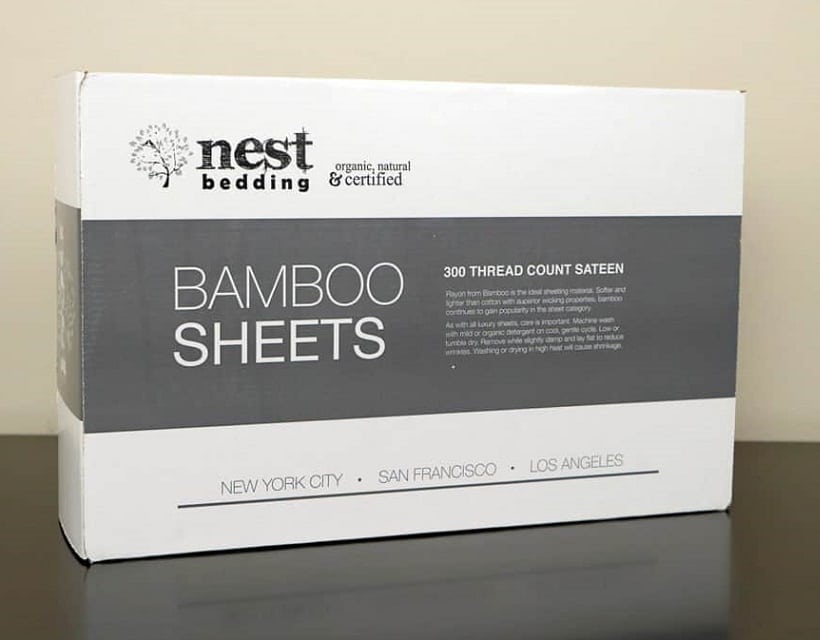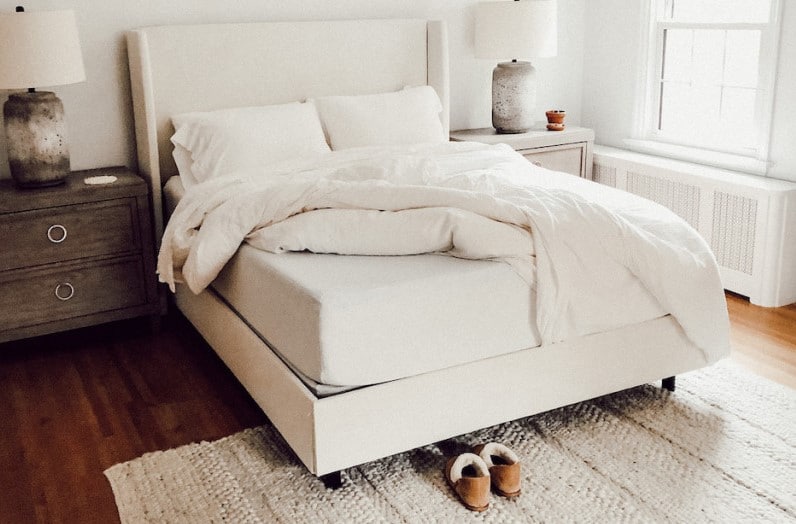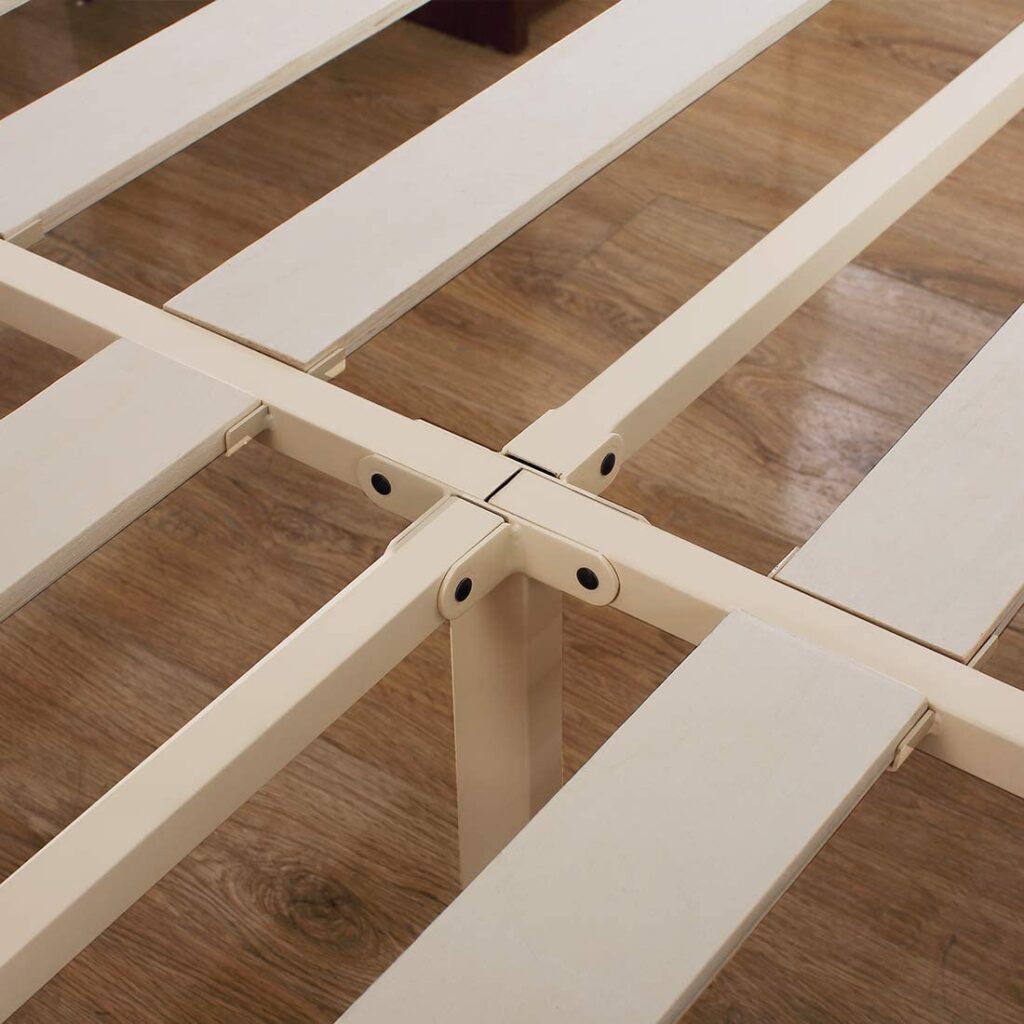After the wake-up alarm rings, disarranged bedsheets are the second alarming reality that the day will be full of annoying tasks. Readjusting a slippery bedsheet in the morning is usually the first task we wake up to. And there’s nothing as frustrating as waking up to this!
The solution isn’t about retucking the sheet back. The question is: will it stay that way? And the answer is, not really, but until you find a lasting solution. With the right trick, a sheet can stay smooth and taut for a long time. So, in this post, we’ll give you some tips and tricks on how to keep sheets on the bed. Whether you have a traditional or adjustable bed, you’ll find DIY techniques and product-assisted tricks to solving the problem once and for all.
There are various types of sheets according to the materials they are made with and the sleep comfort. Some of the most commonly used types of sheets are silky, satin, cotton, and linen sheets.
Silky and satin sheets are the most slippery types of sheets. They slip on and off very quickly. Avoid satin or silk sheets or any fabric made with a glossy finish.
If you want a sheet that slips less, choose anti-slip types made of cotton, flannel, or linen. If you like satin, silk, tencel sheets, and other similar types of sheets, choose sheets that are fitted with flannel. The friction between the materials will keep it from rolling off.
Without having to purchase clips, elastic bands, fasteners, or a new sheet, you can keep the sheets tightly on your bed with the following do-it-yourself tips.
Are you wondering how to keep satin or flat sheets on the bed? You can use the knot technique. First, you have to ensure you have a big sheet.
According to most reviews, the Flat Top Sheet Premium 1800 Ultra-Soft, designed by Bare Home is by far one of the most reliable and easy to care for ones. It is hypoallergenic and wrinkle-resistant.
Once you have laid out the sheet evenly on the bed, lift the mattress at each corner and tie a large knot in the sheet.
If all four corners are knotted but still loose, you can readjust each by knotting again to get the proper tension.
But ensure it’s not too tight; otherwise, the mattress may be rounded a little at the corners by the pressure, which doesn’t look so lovely.
If you can do some little sewing and you have a fitted bedsheet, one of the solutions is to attach elastic bands at the underside of each end of the sheet. The bands will be sewn to join the angle of each of the four sides. These will hold down the sheet, and it will only come off when you want it to.
Adjustable beds are ergonomic types of beds that are designed to be elevated. They ensure excellent sleeping posture and support the neck without the need for a pillow. However, their main downside is as they elevate, they make the sheets slide off more easily.
You don’t have to drop a very comfortable bed system like this because it’s giving you extra tasks of laying your sheets more often. The solutions to this are the following.
The best way to keep sheets firm and tight is to use sheet fasteners. Sheet fasteners are elastic bands that have clips at the ends. They are specially designed to fit the sheets to the mattress so that they are smooth and without wrinkles.
Although there are many models on the market, those with individual bands, triangular-shaped ones, and those with six sides stand out.
Sheet fasteners are placed under the mattress, holding the sheet on all sides. To begin with, it is recommended to turn the mattress over.
This way, you can stretch the sheet and place it to your liking. One of the advantages of sheet fasteners is that you can adjust their tension to keep the sheets more or less stiff.
By opening the main flap of the tweezers, a system of plastic plates is opened where the sheet will be placed.
When the clip is lowered, the plastic plates will close, and the sheet will be secured. These plastic systems do not harm the fabric.
Once the process is done, the sheet will remain firm and secure.
There are high-quality sheets for adjustable beds with elastic bands designed to the four corners. They keep sheets snuggly around the mattress, even on an adjustable bed.
Bedsheets come in two variants: flat and fitted Trusted Source Bed sheet - Wikipedia Bed sheets come in two main varieties: flat and fitted. A flat sheet is simply a rectangular sheet of cloth, while a fitted sheet has its four corners, and sometimes two or four sides, fitted with elastic, to be used only as a bottom sheet. en.wikipedia.org . The flat sheets need to be tucked in and slip frequently.
Fitted sheets with deep pockets look smoother on the bed than regular flat sheets. They stay snug, soft, and remain more on the bed.
Fade-resistant, easy to care for, and cheap, the Utopia Bedding Fitted Sheet is without a doubt one of the most popular anti-slip fitted sheets. Made of soft brushed microfiber, it is designed with deep pockets and is highly recommended by users.
Below are some useful tips and tricks to consider:
If you want to lay a bed sheet correctly, you should use a sufficiently large sheet. This way, you can still fold, knot it, or tuck it into the bed. A sheet that is too short will come off more often and reveal the mattress.
How big the sheet should depend on the size and thickness of the mattress. You can calculate that by taking the width or length of the mattress, plus the thickness of the mattress plus 7.9 inches overhang that you can fold under the mattress. Roughly estimated, it should be about 31 inches extra.
So, if you sleep on a 35.5-by-79-inch mattress, the sheet should be at least 67 by 110 inches. For a 71-by-79-inch double bed, at least 102 by 110 inches.
Another possibility is to use the so-called sheet tensioners. These look a bit like braces that you use on the underside of the mattress to stretch the sheet.
They are usually only used on one side (i.e., not crosswise). A bed sheet becomes almost a fitted sheet, and you only have to pull one side taut. Old suspenders can also be used for this.
A well-tucked bed sheet looks so much nicer than an ill-fitting fitted sheet. With a bit of practice and simple tricks, anyone can learn how to keep sheets on the bed properly so that it looks neat, taut, and smooth.
First, it all starts with finding an excellent quality non-slip sheet. Silks, satin, and other glossy materials are a no-no! And if you can’t do without your silk sheets, you can sew elastic straps at each angle of your fitted sheets. There are also adjustable sheet fasteners with locking mechanisms that you can use for this purpose. You can use them to clip your sheets under your mattress. These ensure your sheets stay snug and prevent sheet bunching.




